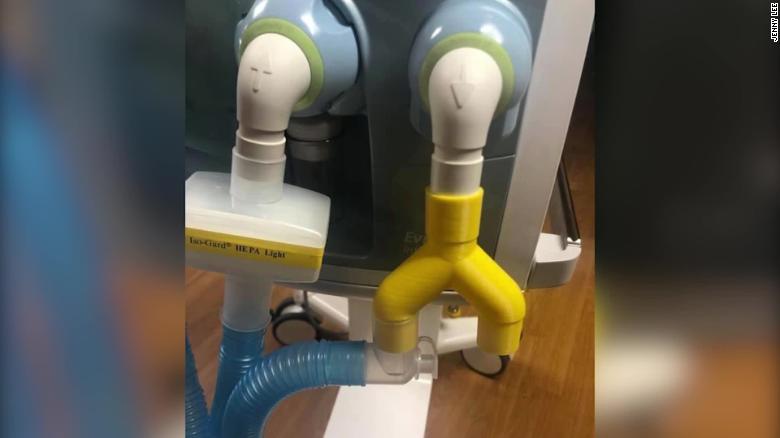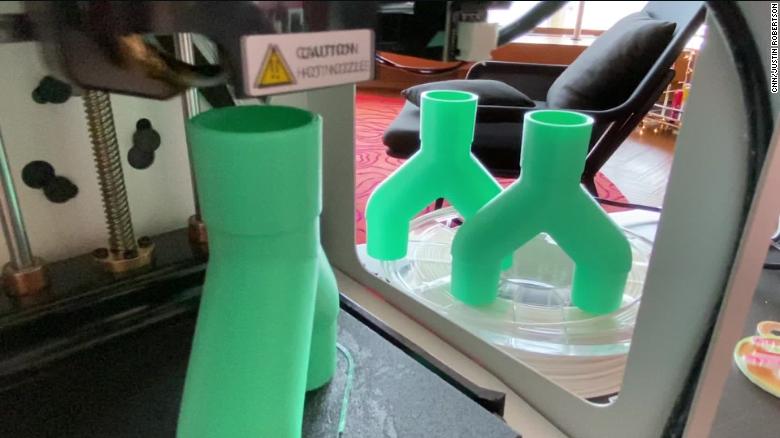For weeks, Christian Parker has been working to save lives across the United States from his home in Washington state using a 3D printer and a blueprint for a small, Y-shaped piece of plastic.Parker has been under a stay-at-home order with his wife and three children since early March,as the US tries to contain the spread of the coronavirus, which has infected at least 700,000 people nationwide.A 3D-printing enthusiast, Parker was fascinated by stories of people in Italy using the technology to help manufacture equipment and protective items at a time when supplies of important medical gear are running low.”[I thought] if I’m sitting at home just tinkering with my 3D printers anyway, or they’re sitting idle, what can I do to jump in and help out where I can?” he said.In the past week, Parker said he hasproduced at least 40 ventilator splitters for hospitals across the US. The simple plastic pipe can help stretch the capabilities of the country’s limited supply of ventilators by dividing the air flow from a single ventilator to multiple patients.
A y-shaped splitter which can be printed at home and then used in hospitals to extend the capacity of limited ventilators in US hospitals.Ventilators have become a key weapon in the battle against coronavirus. The more sophisticated machines help patients breathe by pumping oxygen-rich air into the lungs, while removing carbon dioxide.Parker said he originally bought a 3D printer for his children, age 1, 3, and 5. But as he watched them use it, he became more interested in the technology.Eventually, he bought one for himself. Now he is part of a community of enthusiasts sharing designs and discussing creations online.During the coronavirus outbreak, Parker’s online community has become a mini-manufacturing hub.Each ventilator splitter takes about an hour and 45 minutes to print. Parker and his fellow 3D printers have sent off hundreds of splitters to hospitals across the US, and are discussing sending them around the world.”I think the biggest problem is that we’re all sitting at home and we all feel helpless, and then on top of that we hear about hospital shortages of PPE and ventilators … this is allowing me to feel like I’m contributing in some way,” he said.
Splitters fresh off the 3D printer, ready to be sent out to hospitals.Johns Hopkins University’s Helen Xun said that when there’s a shortage of ventilators, splitters can be a simple solution to help as many patients as possible.Xun and her team are trying to develop a more advanced splitter, which will allow for greater control of the air supply.”When you have multiple patients on one splitter, you don’t have as much fine-tune control for the patients,” she said.Parker said he sees himself as a minor player in the global battle to contain the virus.”I’m not the hero, I’m just playing sidekick to those that are,” Parker said.



